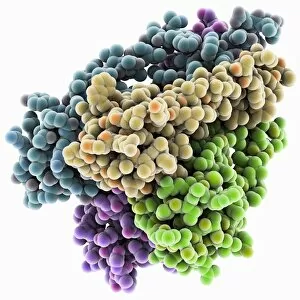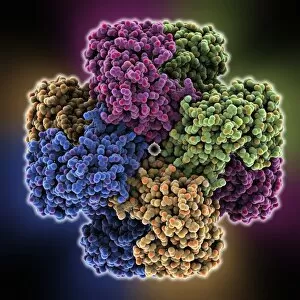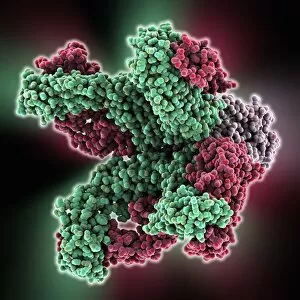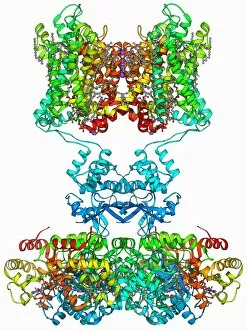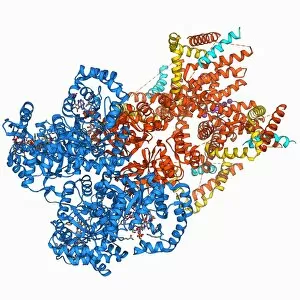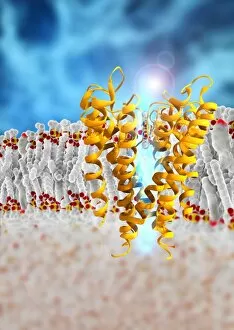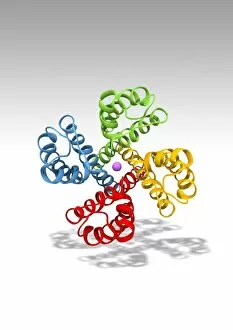Voltage Dependent Collection
"Exploring the Intricacies of Voltage-Dependent Potassium Ion Channels
For sale as Licensed Images
Choose your image, Select your licence and Download the media
"Exploring the Intricacies of Voltage-Dependent Potassium Ion Channels: Unveiling their Protein and Cavity Structures" Voltage-dependent potassium ion channels play a crucial role in regulating cellular excitability by controlling the flow of potassium ions across cell membranes. These channels consist of various components, including the potassium ion channel protein structure and its beta subunit. The intricate architecture of these channels reveals fascinating details about their functioning. The potassium ion channel protein structure forms a complex arrangement that allows for selective permeation of potassium ions while preventing other ions from passing through. This structural design ensures precise control over electrical signaling within cells. Within this protein structure lies the cavity, which acts as a gateway for ion passage. The cavity's unique shape and composition enable it to accommodate specific molecules like potassium ions, facilitating their movement across cell membranes. Understanding the intricacies of this cavity structure is vital in deciphering how voltage-dependent channels function. Amongst these voltage-gated potassium channels are F006/9642, F006/9562, F006/9391, and F006/9324 – each with distinct characteristics contributing to cellular processes such as repolarization and maintaining membrane potential stability. Studying these individual channel variants sheds light on their diverse roles in different tissues or under varying physiological conditions. Moreover, exploring the role played by beta subunits associated with these voltage-gated potassium channels adds another layer of complexity to our understanding. The presence of beta subunits modulates channel properties such as activation kinetics and pharmacological sensitivity, further fine-tuning cellular responses. By delving into the structures and functions of voltage-dependent potassium ion channels at both molecular and atomic levels, scientists strive to unravel their contributions to neuronal excitability regulation, muscle contraction control, hormone secretion modulation, and more.

